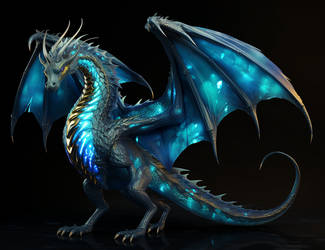ShopDreamUp AI ArtDreamUp
Deviation Actions
Suggested Deviants
Suggested Collections
You Might Like…
Featured in Groups
Description
An illustration done for the Chilean TCG "Myths and Legends" during the beginning of the year.
Let's see some Wikinformation about this creature:
The amphisbaena is a mythological, ant-eating serpent with a head at each end. The creature is alternatively called the amphisbaina, amphisbene, amphisboena, amphisbona, amphista, amfivena, amphivena, or anphivena (the last two being feminine), and is also known as the "Mother of Ants". Its name comes from the Greek words amphis, meaning "both ways", and bainein, meaning "to go". According to Greek mythology, the amphisbaena was spawned from the blood that dripped from the Gorgon Medusa's head as Perseus flew over the Libyan Desert with it in his hand, after which Cato's army then encountered it along with other serpents on the march. Amphisbaena fed off of the corpses left behind. The amphisbaena has been referred to by various poets such as Nicander, John Milton, Alexander Pope, Percy Bysshe Shelley, Alfred, Lord Tennyson, A. E. Housman and Allen Mandelbaum; as a mythological and legendary creature, it has been referenced by Lucan, Pliny the Elder, Isidore of Seville, and Thomas Browne, the last of whom debunked its existence.
The amphisbaena has a twin head, that is one at the tail end as well, as though it were not enough for poison to be poured out of one mouth.
This early description of the amphisbaena depicts a venomous, dual-headed snakelike creature. However, Medieval and later drawings often show it with two or more scaled feet, particularly chicken feet, and feathered wings. Some even depict it as a horned, dragon-like creature with a serpent-headed tail and small, round ears, while others have both "necks" of equal size so that it cannot be determined which is the rear head. Many descriptions of the amphisbaena say its eyes glow like candles or lightning, but the poet Nicander seems to contradict this by describing it as "always dull of eye". He also says: "From either end protrudes a blunt chin; each is far from each other." Nicander's account seems to be referring to what is indeed called the Amphisbaenia.
I hope you like it!
Let's see some Wikinformation about this creature:
The amphisbaena is a mythological, ant-eating serpent with a head at each end. The creature is alternatively called the amphisbaina, amphisbene, amphisboena, amphisbona, amphista, amfivena, amphivena, or anphivena (the last two being feminine), and is also known as the "Mother of Ants". Its name comes from the Greek words amphis, meaning "both ways", and bainein, meaning "to go". According to Greek mythology, the amphisbaena was spawned from the blood that dripped from the Gorgon Medusa's head as Perseus flew over the Libyan Desert with it in his hand, after which Cato's army then encountered it along with other serpents on the march. Amphisbaena fed off of the corpses left behind. The amphisbaena has been referred to by various poets such as Nicander, John Milton, Alexander Pope, Percy Bysshe Shelley, Alfred, Lord Tennyson, A. E. Housman and Allen Mandelbaum; as a mythological and legendary creature, it has been referenced by Lucan, Pliny the Elder, Isidore of Seville, and Thomas Browne, the last of whom debunked its existence.
The amphisbaena has a twin head, that is one at the tail end as well, as though it were not enough for poison to be poured out of one mouth.
This early description of the amphisbaena depicts a venomous, dual-headed snakelike creature. However, Medieval and later drawings often show it with two or more scaled feet, particularly chicken feet, and feathered wings. Some even depict it as a horned, dragon-like creature with a serpent-headed tail and small, round ears, while others have both "necks" of equal size so that it cannot be determined which is the rear head. Many descriptions of the amphisbaena say its eyes glow like candles or lightning, but the poet Nicander seems to contradict this by describing it as "always dull of eye". He also says: "From either end protrudes a blunt chin; each is far from each other." Nicander's account seems to be referring to what is indeed called the Amphisbaenia.
I hope you like it!
Image size
1181x1546px 1.13 MB
Comments2
Join the community to add your comment. Already a deviant? Log In
Awesome




































